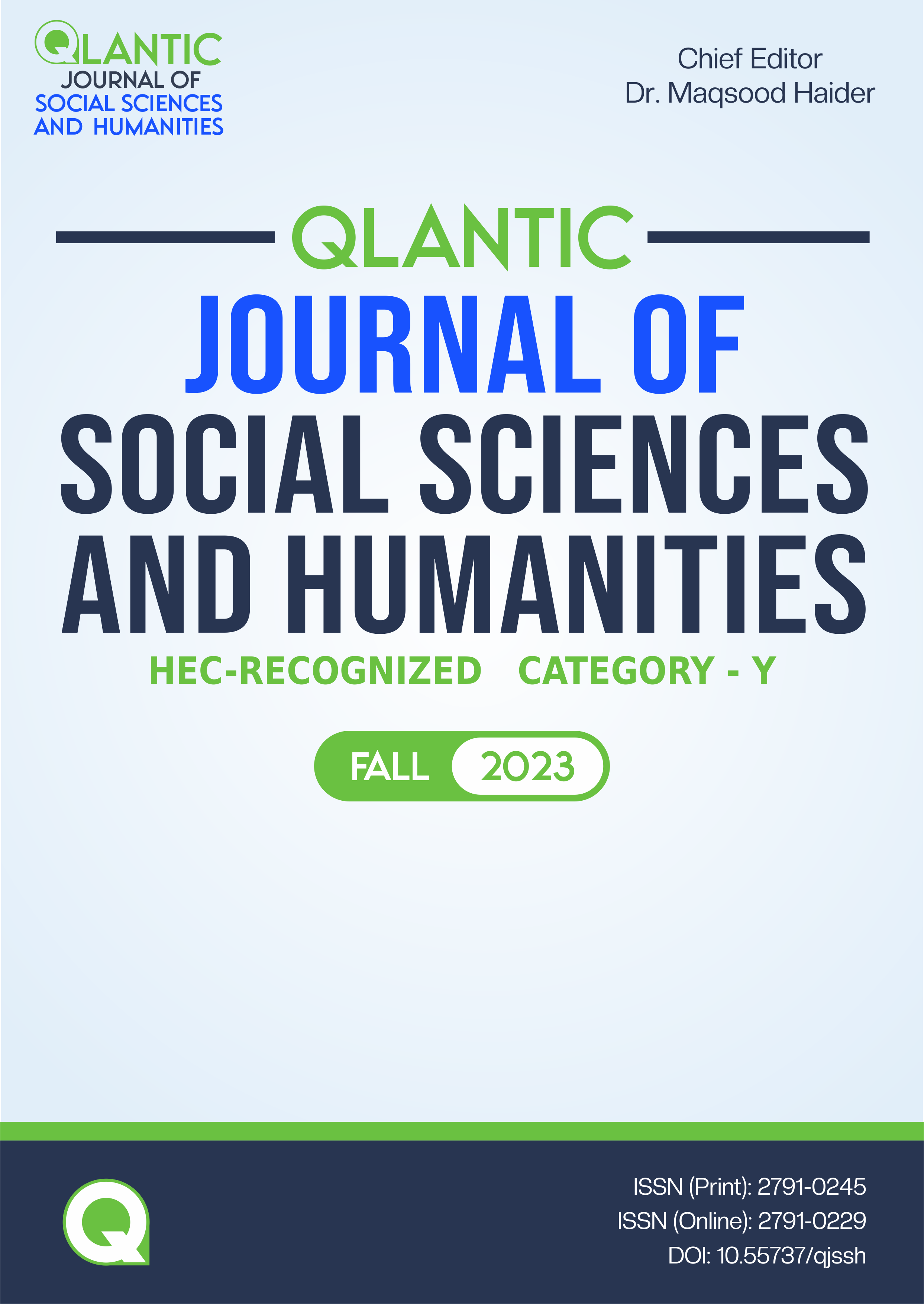Role of Marginalized Women in Shaping Environmental Activism in Sindh: A Case Study of Jogi and Bagri Communities
DOI:
https://doi.org/10.55737/qjssh.144285427Keywords:
Marginalized Women, Environmental Activism, SindhAbstract
This study investigates the role of marginalized women of the Jogi and Bagri communities in environmental activism. Amid environmental challenges, this study tries to comprehend the contributions and effects of marginalized women belonging to the Jogi and Bagri communities that are frequently overlooked in dominant environmental discourses in Sindh. The study tries to understand the narratives and opinions of marginalized women from the Jogi and Bagri communities by comprehending environmental action through qualitative research methodologies that include in-depth interviews, focus group discussions, and participant observation. This research venture is an interdisciplinary work. The work focuses on political science, environmental sociology, and community development fields of studies. The study aims to highlight the issue of environmental injustices and relevant aspects that inspire underprivileged women of backward communities to engage in environmental activism. The findings of this research venture provide a comprehensive analysis of contemporary information regarding the environmental activism led by women of the downtrodden class in the district of Khairpur, Sindh. The paper concludes that women from marginalized communities, such as the Jogi and Bagri communities in district Khairpur, Sindh, are involved in the promotion of sustainable and just environmental policies.
References
Abdul Aziz, N. N. (2003). Does Environmental Values, Beliefs, and Norms Effect Social Entrepreneurial Intention? A Study Based on an Emerging Country Context. Journal of Social Entrepreneurship, 1-24. https://doi.org/10.1080/19420676.2023.2212665
Ahmed, M. N., & Atiqul Haq, S. M. (2017). Indigenous People’s perceptions about climate change, forest resource management, and coping strategies: A comparative study in Bangladesh. Environment, Development and Sustainability, 21(2), 679-708. https://doi.org/10.1007/s10668-017-0055-1
Ajani, A., & Van der Geest, K. (2021). Climate change in rural Pakistan: Evidence and experiences from a people-centered perspective. Sustainability Science, 16(6), 1999-2011. https://doi.org/10.1007/s11625-021-01036-4
Ali, G., Abbas, S., & Mueen Qamer, F. (2013). How effectively low carbon society development models contribute to climate change mitigation and adaptation action plans in Asia. Renewable and Sustainable Energy Reviews, 26, 632-638. https://doi.org/10.1016/j.rser.2013.05.042
Asif, M. N. (2003). Analyzing Imran Khan’s Billion Tree Tsunami Initiative from Ecolinguistic Perspective: Assessing its Environmental Implications for Pakistan. Panacea Journal of Linguistics & Literature, 2(2), 1-17.
Clark, S. J., Burt, M. R., Schulte, M. M., & Maguire, K. E. (1996). Coordinated community responses to domestic violence in six communities: Beyond the justice system. PsycEXTRA Dataset. https://doi.org/10.1037/e725312011-001
Evans, S. S. (2014). Mapping cultural and creative industries in Pakistan. British Council.
Harper, C. &. (2017). Environment and society: Human perspectives on environmental issues. Routledge.
Hussain, M., Butt, A. R., Uzma, F., Ahmed, R., Irshad, S., Rehman, A., & Yousaf, B. (2019). A comprehensive review of climate change impacts, adaptation, and mitigation on environmental and natural calamities in Pakistan. Environmental Monitoring and Assessment, 192(1), https://doi.org/10.1007/s10661-019-7956-4
Mustafa, D. &. (2014). Despite the best intentions? Experiences with water resource management in northern Afghanistan. In Water and post-conflict peacebuilding, 189-209.
Petersen, P. E. (2009). Global policy for improvement of oral health in the 21st century – implications to oral health research of world health assembly 2007, World Health Organization. Community Dentistry and Oral Epidemiology, 37(1), 1-8. https://doi.org/10.1111/j.1600-0528.2008.00448.x
Pretty, J. (2003). Social capital and the collective management of resources. Science, 302(5652), 1912-1914. https://doi.org/10.1126/science.1090847
Putnam, R. (2001). Social capital: Measurement and consequences. Canadian Journal of Policy Research, 2(1), 41-51. https://search.oecd.org/education/innovation-education/1825848.pdf
Qureshi, I. B. (2020). Causes, symptoms, and consequences of social media-induced polarization (SMIP). Information Systems Journal, 11. https://dokumen.tips/documents/causes-symptoms-and-consequences-of-social-media-induced-2020-4-14-introduction.html?page=1
Richardson, B. J. (2011). Public participation in environmental decision-making. 313-327. https://doi.org/10.4337/9781783478408.ii.23
Sarwar, F., Malik, R. N., Chow, C. W., & Alam, K. (2018). Occupational exposure and consequent health impairments due to potential incidental nanoparticles in leather tanneries: An evidential appraisal of South Asian developing countries. Environment International, 117, 164-174. https://doi.org/10.1016/j.envint.2018.04.051
Sethi, S. (2018). Tribes at the Borderland: Locating ‘Pakistani Hindu Bhils’ in Jodhpur, Rajasthan. Journal of Adivasi and Indigenous Studies, 8(2), 51-63.
Tindall, D. B., Davies, S., & Mauboulès, C. (2003). Activism and conservation behavior in an environmental movement: The contradictory effects of gender. Society & Natural Resources, 16(10), 909-932. https://doi.org/10.1080/716100620
Published
Issue
Section
License
Copyright (c) 2023 Amar Manzoor Tunio, Habib Ali Katohar, Jalil Ahmed Chandio

This work is licensed under a Creative Commons Attribution-NonCommercial 4.0 International License.





